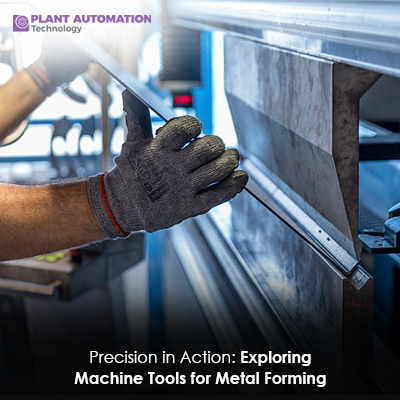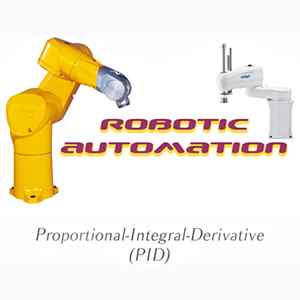Precision in Action: Exploring Machine Tools for Metal Forming

Metal forming is a crucial process in manufacturing industries, where raw materials are transformed into finished products through various techniques. One of the key elements in metal forming is the use of machine tools, which play a pivotal role in achieving precision, efficiency, and quality in the manufacturing process. In this article, we delve into the world of machine tools for metal forming, exploring their types, functionalities, applications, and the role they play in shaping modern manufacturing.
I. Understanding Metal Forming
Metal forming encompasses a range of processes used to shape metal materials into desired forms. These processes include bending, stamping, forging, rolling, extrusion, and more. Each process requires specific tools and equipment tailored to the task at hand. Machine tools for metal forming are designed to provide the necessary force, precision, and control required to shape metals accurately and efficiently.
II. Types of Machine Tools for Metal Forming
Presses: Hydraulic and mechanical presses are commonly used in metal forming. They apply pressure to deform the metal into the desired shape. Presses can be categorized based on their operation, such as mechanical presses that use a motor and hydraulic presses that use fluid power.
Rolling Mills: Rolling mills are used for processes like sheet metal rolling, where metal sheets are passed through rollers to reduce thickness or change shape. These machines can be hot or cold rolling mills, depending on the material and process requirements.
Forging Machines: Forging involves shaping metal by applying compressive force. Forging machines, such as hammer forges and hydraulic presses, are used to create forged parts with high strength and precision.
Extrusion Machines: Extrusion is a process where a metal billet is forced through a die to create complex shapes. Extrusion machines, including hot extrusion presses and cold extrusion machines, are used in industries like automotive and aerospace for producing components with precise geometries.
Bending and Forming Machines: These machines are used for bending metal sheets or tubes into various shapes. Examples include press brakes for sheet metal bending and tube bending machines for forming pipes and tubes.
Cutting Machines: While not strictly forming machines, cutting machines like laser cutters, plasma cutters, and waterjet cutters play a vital role in metal fabrication by cutting and shaping metal components accurately.
III. Functionalities and Features
Machine tools for metal forming come with a range of functionalities and features that enhance their performance and versatility:
Precision Control: Advanced control systems ensure precise operation, allowing for tight tolerances and high-quality finished products.
Automation: Many modern machine tools are equipped with automation features such as CNC (Computer Numerical Control) systems, robotics, and AI-driven controls, reducing manual intervention and improving efficiency.
Flexibility: Some machines offer modular setups and tooling options, allowing manufacturers to produce a variety of parts with the same equipment.
Safety Features: Safety measures like interlocks, emergency stops, and protective guards ensure a safe working environment for operators.
Energy Efficiency: Many machines are designed for energy efficiency, incorporating technologies like regenerative braking and smart power management systems.
IV. Applications in Various Industries
The versatility of machine tools for metal forming makes them indispensable in a wide range of industries:
Automotive: Machine tools are used to manufacture automotive components such as engine parts, chassis components, and body panels with precision and durability.
Aerospace: In aerospace manufacturing, machine tools are vital for producing complex components like turbine blades, structural parts, and aircraft frames to stringent quality standards.
Construction: Metal forming machines are used in the construction industry for fabricating structural steel elements, reinforcement bars, and architectural components.
Electronics: Precision metal forming is essential in electronics manufacturing for producing components like heat sinks, connectors, and enclosures.
Medical: Machine tools play a role in medical device manufacturing, producing components for surgical instruments, implants, and diagnostic equipment.
Energy Sector: From renewable energy infrastructure like wind turbine components to traditional energy equipment like pipelines and valves, machine tools are integral to energy sector manufacturing.
V. Advancements and Future Trends
The field of machine tools for metal forming continues to evolve with technological advancements and industry trends:
Industry 4.0 Integration: The integration of machine tools with Industry 4.0 technologies such as IoT (Internet of Things), data analytics, and digital twins enables real-time monitoring, predictive maintenance, and optimization of manufacturing processes.
Additive Manufacturing: Additive manufacturing technologies like 3D printing are complementing traditional metal forming processes, offering new possibilities for complex geometries and rapid prototyping.
Materials Innovation: Advancements in material science, including high-strength alloys, composites, and lightweight materials, are driving the development of machine tools capable of handling these materials with precision.
Sustainability Focus: Machine tool manufacturers are increasingly focusing on sustainable practices, incorporating energy-efficient designs, recycling systems, and eco-friendly materials into their products.
VI. Challenges and Considerations
While machine tools for metal forming offer numerous benefits, there are challenges and considerations to keep in mind:
Cost of Equipment: High-quality machine tools can be expensive, requiring significant investment for manufacturers.
Skilled Labor: Operating and programming modern machine tools require skilled personnel, highlighting the importance of training and education in the manufacturing sector.
Maintenance and Upkeep: Regular maintenance and timely upgrades are essential to ensure optimal performance and longevity of machine tools.
Global Supply Chain Dynamics: Factors such as raw material availability, geopolitical issues, and supply chain disruptions can impact the availability of machine tools and their components.
Conclusion
Machine tools for metal forming are the backbone of modern manufacturing, enabling precision, efficiency, and versatility in the production of a wide range of products across industries. With advancements in technology, integration with Industry 4.0 principles, and a focus on sustainability, these machines continue to drive innovation and shape the future of manufacturing.
In a world where precision and quality are paramount, machine tools for metal forming stand as indispensable assets, empowering manufacturers to meet the demands of an ever-evolving market landscape.







